A few weeks ago I paddled around Key Biscayne, one of Miami’s barrier islands, with a buddy of mine. We traveled clockwise on the map (click the preceding link) from Crandon Marina. The weather was unusually good and we had a great time. Here are some photos.
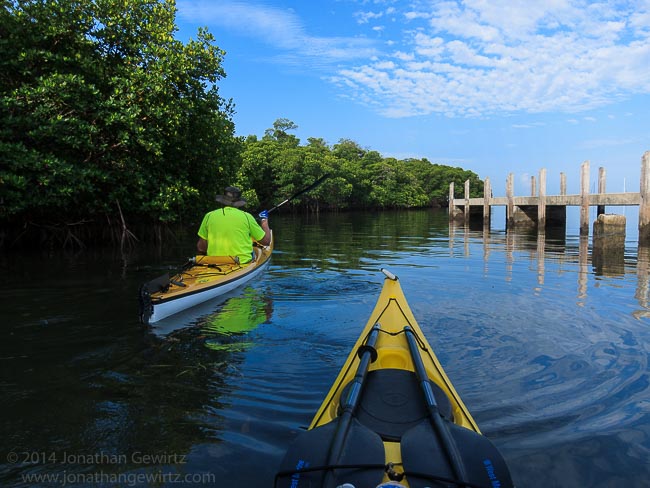
Departing Crandon Marina.
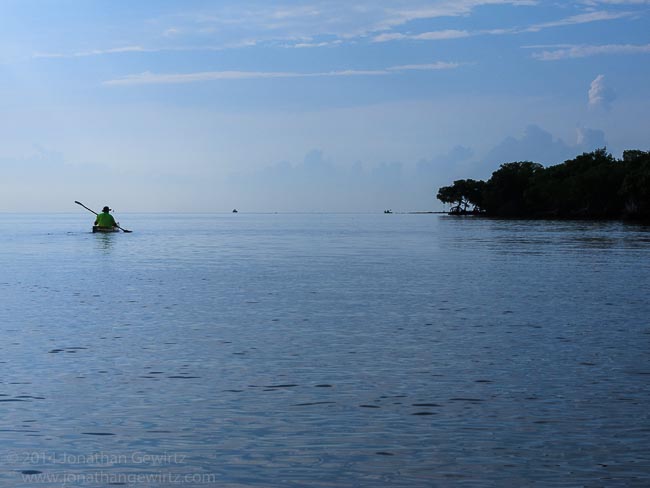
In Bear Cut, looking northeast.
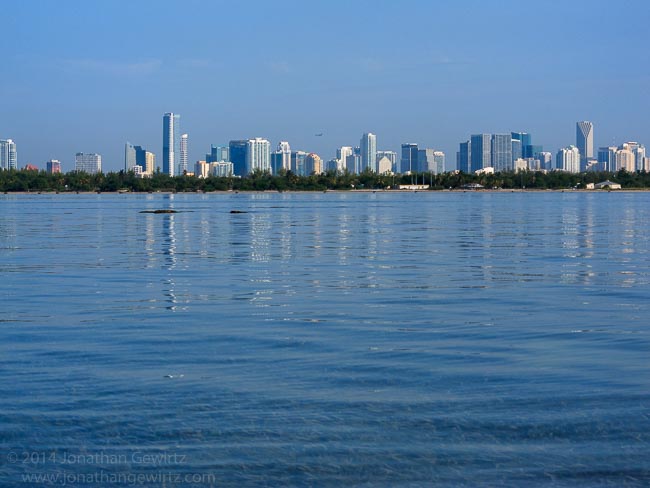
In Bear Cut, looking west-northwest towards downtown Miami.

Ocean side of Key Biscayne at low tide and zero wind.

Continuing along the ocean side of Key Biscayne.
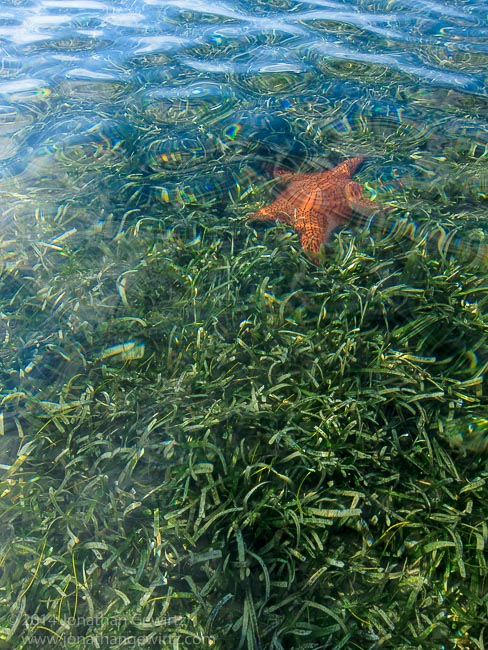
We saw several of these large starfish.
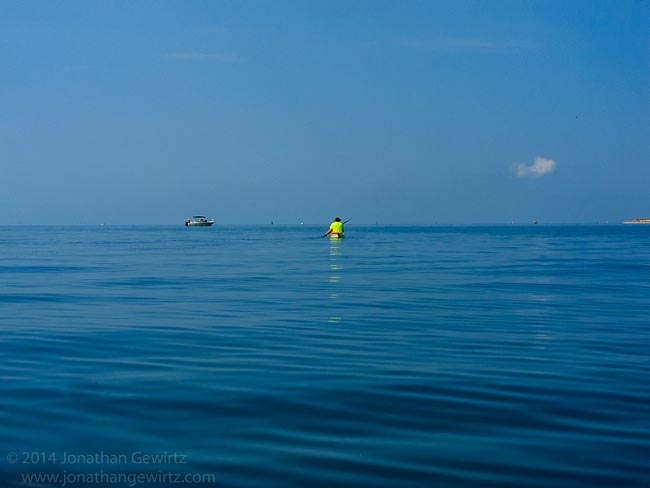
Continuing south.
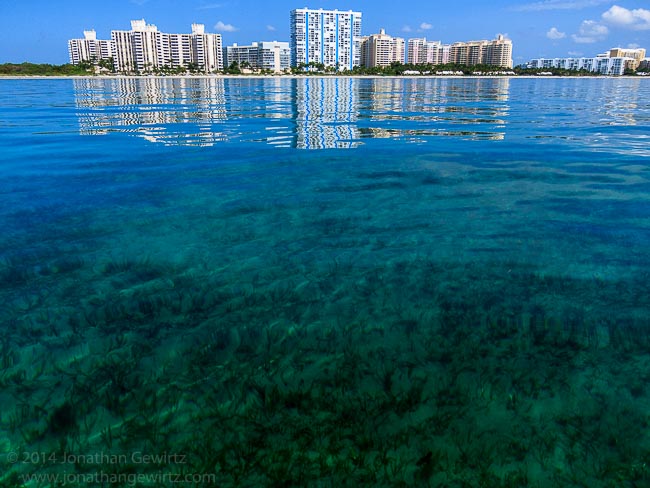
Continuing south, offshore from some condos. The water really was that beautiful.
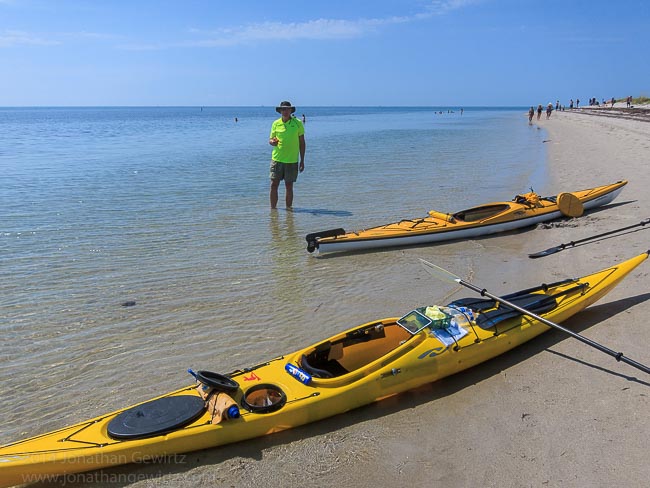

The Cape Florida Lighthouse on the southern tip of Key Biscayne is the oldest man-made structure in South Florida.
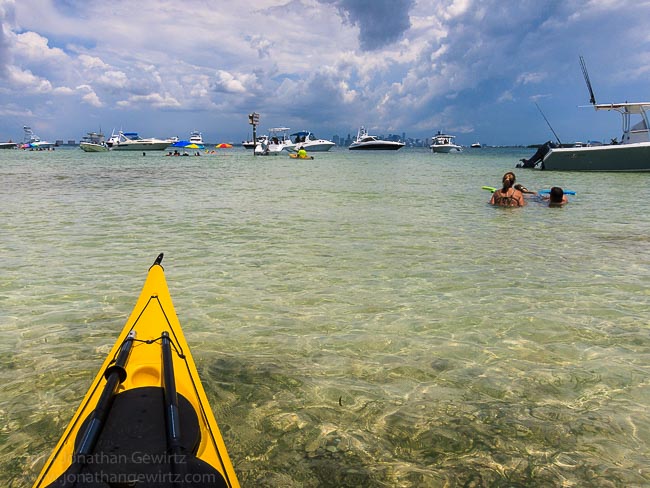
Back in Biscayne Bay, about 3/4 of the way around Key Biscayne. Much of the bay is extremely shallow, and there are a few areas like the one pictured where boaters hang out on nice weekends.
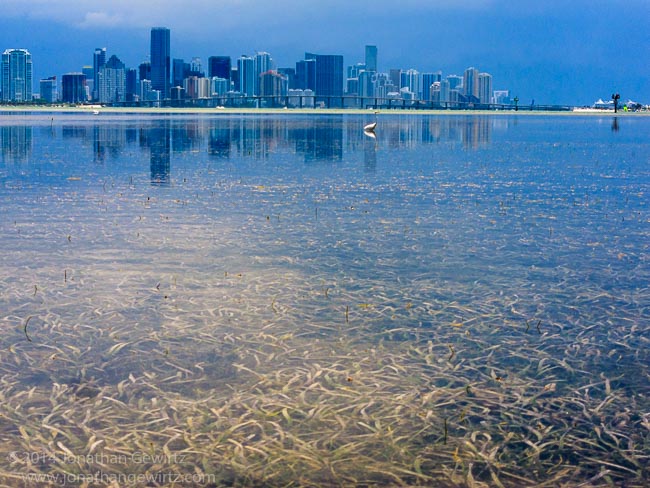
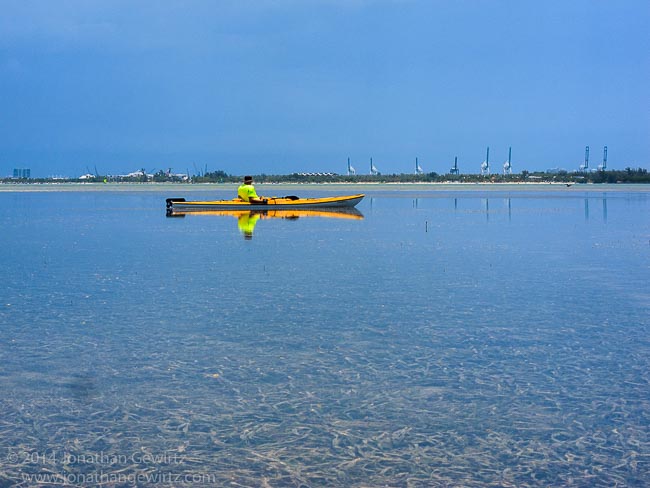
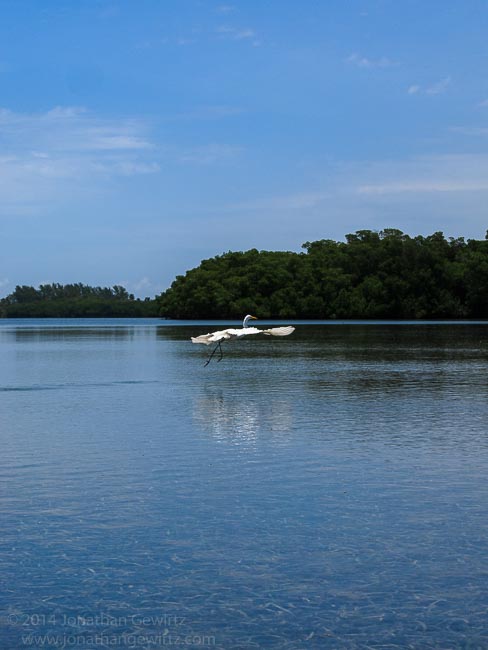
Great Egret
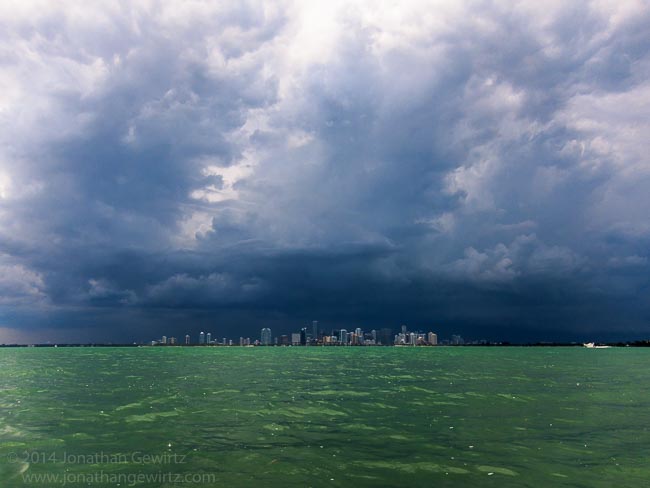
Approaching storm. We completed our trip before it reached us.
Looks like fun. I have heard that the existence of starfish indicates a very clean environment.
We should try this with drones some time.
Considering purchase of kayak. What brand and style would you suggest? What to stay away from. email pls.
Looks like fun Jon. Nice photos and amazing water. Shallow though. Hard to paddle in that?
A bit, but the super shallow areas were only a small part of the route.
this is an info guide from Cincypaddlers, a yahoo group in Cincinnati. it was written by Hank Dorfman, a paddling guru with 30+ years in boats–
How to select a kayak
First, answer these questions. What are you going to use it for (fishing, camping or?) and on what kind of water? What is your skill level?
The answers will lead you to the characteristics that are most important to you. There are about a half dozen or more genres of kayaks, but the three principal ones are recreational, whitewater and sea/touring.
As a general rule, the longer and narrower a boat is, the more efficient and faster it is. Long boats also track (tend to go straight) better. Shorter boats are more maneuverable, making them appropriate for twisty, moving water. Everything is a tradeoff, so it’s important to know which traits have priority for your purposes.
Sea kayaks are long (usually, 15’-18’) providing efficiency for long distances without benefit of current, as well as more room to stow gear. Whitewater boats are short (7’-9’). Recreational boats usually fall in between, and they have extra beam (width) for stability. The tradeoff for the stability is less efficiency.
Most boats are molded plastic, composites (fiberglass, Kevlar, carbon fiber, etc.) or thermoformed material. The cost and application varies.
Plastic is the least expensive and is relatively durable. However, it is heavy, somewhat floppy (robbing efficiency) and does not lend itself to precise design features. It is the best choice for most people, especially if they aren’t expert paddlers or paddle shallow, rocky streams.
Composites are expensive and subject to chipping and scratches. They can be shaped for optimal performance and often weigh less. The weight savings is usually significant only in longer boats. Composites are most appropriate for serious sea kayakers.
Thermoformed boats are somewhere in between. They make more sense the longer you get.
Couples sometimes debate between a tandem or two solo boats. The latter choice gives you the flexibility you require if only one wants to go paddle. However, a tandem boat may be a good choice if only one person has good paddling skills, or if you want to take children or pets along. Tandem boats are also called “divorce boats” because of disagreements over control.
You should select a boat that best suits your needs on the water, not the land. Picking a boat because it is easy to lift or store isn’t a good decision. You spend 98% of your boat time on the water, not carrying it. There are carts and other aids to facilitate that.
Some boats present you with the option of adding a rudder or skeg. The purpose of this is to help you maintain a straight course when you’re out on open water with wind and waves. If you’re not paddling that type of water, it isn’t worth the additional expense or weight. Getting a rudder to turn the boat is not a good idea. Your paddle is for boat control.
Kayaks can either be sit-ins or sit-on-tops. A sit-in (most common) can either have a large, wide open cockpit or a smaller opening. The large opening provides easier access, but is subject to admitting splashy water. A smaller cockpit provides you with contact points under the deck for your knees, enabling you to exercise better boat control.
A sit-on-top has the advantages of easier access and self-rescue in deep water, along with places to mount fishing gear or other apparatus. It’s also a good choice if you plan to swim or snorkel off the boat frequently. You are more exposed to weather on these craft. They tend to be stable, but bulky.
For most paddling around here (Cincinnati), a plastic boat of 13’-15’ covers most of the possibilities. It’s maneuverable enough for the slow moving rivers, but efficient enough for flatwater paddling. There are short, cheap “beginner” kayaks, but many people tire of them quickly.
Try before you buy, so you don’t get any nasty surprises after you’ve written the check. Avoid unpopular or radical boats, brands and models, or be willing to take a loss at resale. Also, if a boat is “real cheap,” there’s probably a reason for that.
The paddle
Paddles come in lengths. For most people, 215cm-230 cm is appropriate for touring/sea kayaks and recreational boats. For whitewater, 193cm-203 cm.
Blades vary in area and shape. The larger the blade, the more power. Also, the more effort and less repetitions. The trend has been to short paddles with smaller blades, with more frequency of stroke.
If you paddle high angle (shaft almost vertical), you need a shorter paddle with a wide blade. A more relaxed angle (more horizontal) fits with a longer paddle and long, slender blade.
Some paddles have bends in the shaft (called bent or crank shaft) to provide better alignment with the wrists. This also adds weight and cost to the paddle.
If a paddle is feathered, this means the blades are offset to different planes. This cuts down wind resistance, but requires wrist rotation with every stroke. Some paddles are adjustable for length and feather angle.
Cheap paddles have aluminum shafts. They’re relatively heavy and the shaft can get hot in summer. The next grade up is usually made from fiberglass. The higher end uses carbon fiber. For most paddlers, a fiberglass paddle does just fine. Figure on paying $150-200.
PFD
The personal floatation device should be selected for fit and freedom of movement. Keep in mind that you will be wearing extra layers in cool weather. There should be adjustment straps below the ribcage to ensure the PFD does not ride up over your head when immersed. Pockets, attachment patches and other features should be considered, depending upon what you use the boat for. Always wear your PFD when you paddle.
Helmet
If you’re paddling fast, rocky water, wear a helmet. It should be of good quality and fit snugly. A decent helmet costs $60-120.
Clothing
In warm weather, it’s simple. Fast-drying clothing that protects you from chaffing from the PFD, and maybe provides protection from the sun. Footgear should drain and be devoid of loops and straps that can catch on footpegs or other boat parts, should you capsize. It should also protect your feet from rocks. In cool weather, have splash gear that wards off wind and spray.
For cold weather, dress for a swim, not the air. That means either a wetsuit (neoprene) or drysuit. The latter is more expensive.
In either case, you will probably use insulation layers. Make sure they’re woven from a wicking synthetic, like polyproyolene, capilene or similar material. Never wear cotton because it loses its insulation properties when wet.
Do not neglect the head, hands and feet. For your hands, you can go with gloves or pogies (a mitten-like thing that attaches to the paddle shaft), or both.
Other
Suggested other gear includes a whistle, waterproof first aid kit and throw bag (rescue device). If you plan on rolling, noseclips. An easily accessible paddling knife is good for cutting people free of lines and branches. Or, spreading peanut butter. Get some good drybags if you plan on hauling “stuff” with you. Floatation bags are a good idea for whitewater boats and open crossings in sea kayaks and sit-on-tops. A paddle float is helpful for self-rescue.
Sprayskirts are required for whitewater boats and other kayaks in rough water. In whitewater, a neoprene skirt with a strong elastic rim is needed. Milder conditions allow for a less expensive nylon version.
Beautiful color and composition
Consider taking a demo of a pedal kayak or better yet renting one for a day or two. Hobie makes a mirage drive unit that is spectacular. We will never return to paddling although it does come with paddle strapped on the side.
The flapping fins of the drive are similar to a penguin wing
http://www.hobiecat.com/mirage/miragedrive/
http://www.youtube.com/watch?v=lD6OQhCeXqs
Not cheap. But worth a consideration
Distance increases
Ease of effort increases
Speed increases
Efficiency increases
Potential damage to rotator cuff eliminated
Workout potential increases
We love them…..turbo fin recommended
Love the blog….always something interesting